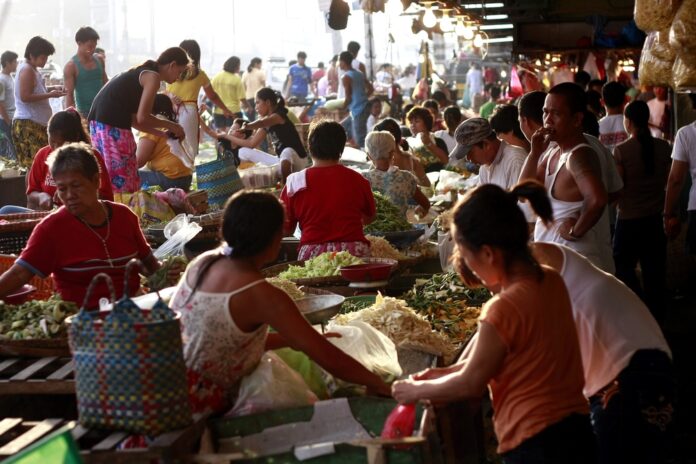Late in December last year the World Food Organization reported that malnutrition is widespread across the Philippines as the number of Filipinos simply cannot afford to have a healthy diet. In Metro Manila alone, some 2.9 million Filipinos went into a state of “involuntary hunger” and went about their lives for months with hardly anything to eat, according to a survey conducted by the Social Weather Stations.
The statistics are dire and the outlook for the country with large tracks of agricultural land is approaching the catastrophic.
According to latest data from the Philippine Statistics Authority (PSA) the annual per capita production of rice at end-2019 dropped to 114.69 kilograms (kg) representing a production index of 97.3 percent. This was 2.7 percent lower than the 2018 record.
In the same period, the per capita production level of corn increased to 74.37 kg or an index of 101.2 percent, indicating that the annual per capita production of corn increased by 1.2 percent.
The PSA also highlighted that all so-called reference livestock products exhibited lower per capita production estimates in 2019 compared earlier levels. In the poultry sector, dressed duck production reported lower output than 2018 levels.
For select fishery products, 2019 levels proved higher than 2018 production levels particularly for milkfish, round scads, shrimp, prawns and oyster.
Citing 2018 figures, the PSA also said the proportion of food expense to total annual family expenditure, as reported in the 2018 Family Income and Expenditure Survey, was estimated at P5.91 trillion, representing a 20.9 percent increase from the 2015 level of P4.88 trillion.
Global and domestic statistics cited numbers as far back as 2018 up to 2021 but the practical impact of the debilitating factors and drivers are still felt to this day.
These were also the same reasons why President Ferdinand Marcos Jr. recently signed Executive Order 10 that extended the scaled-back most favored nation tariff (MFN) mechanism for pork, corn, rice and coal. Reduced tariff on pork, corn, rice and corn require similar treatment of other imported food products under the MFN mechanism, except for food imports covered by free trade agreements (FTA).
As consequence of EO 10, the duty rate on pork for in quota shipments stand at 15 percent and 25 percent for out quota shipments until the end of the year.
EO 10 also maintained tariffs of in quota and out quota rice to 35 percent and kept the corn tariff to 5 percent for in quota and to 15 percent for out quota until December 31, 2023.
The policy also maintained the zero tariff on coal beyond the end of the year but subject to a semestral review after the period lapses.
The Department of Agriculture (DA) said that such an extension is necessary as local production of goods still cannot be relied upon having been adversely affected by various factors.
This decision, however, did not sit well with most local food producers.
The Samahang Industriya ng Agrikultura (SINAG) said the signing of EO 10 merely means that the government listened more to the economic managers although prices in markets across the country were not reduced as intended by previous EOs that the lowered tariff rate of the commodities in question.
Rosendo So, SINAG chairman, said both the local producers and the government lost as a result of the scaled back tariff, adding that cold storage facilities for pork imports remained overfilled with inventory of over 110 million kg.
“There are still those in reefer vans waiting for free space. We have no more space for imported pork,” said So, in a statement.
SINAG said that if there was a supply gap on pork as well as with rice and chicken, farmgate prices of these commodities should have also risen instead of dropping.
Meanwhile, the Unyon ng mga Manggagawa sa Agrikultura (UMA) warned that EO 10 “is like setting off a bomb” that will adversely impact local producers.
“Importing food staples like corn and rice does not support food security like (President) Marcos claims. It destabilizes domestic food production and justifies land conversion, hurting the country’s food security program in the long run,” said John Milton Lozande, UMA spokesperson, in a recent statement.
UMA added that instead of scaling back tariff, the government should instead provide genuine agrarian reform and subsidies to help producers keep pace with the rising costs of fuel and fertilizers.
The Kilusang Magbubukid ng Pilipinas (KMP) said that EO 10 will only benefit importers but not local producers.
Rafael Mariano, KMP chairperson emeritus, said that previous lowering of tariffs has not resulted to reduced prices, especially for pork products.
Amid the criticisms, DA Undersecretary for policy, planning and regulations, Mercedita Sombilla, reiterated that EO 10 is needed to fill up supply gaps currently experienced.
She gave assurance that the process is being watched carefully and that the Philippines import only what is needed, that these do not exceed local demand to help stabilize prices and fill supply deficits to stabilize or possibly even lower them.
“We expect demand for many of food commodities that suffer from low demand during the pandemic to go a bit faster, and that is what we are watching closely. Imports should still be there in order to support” unfulfilled demand, Sombilla added.
Among the few who look with favor at the EO 10 extension include the Meat Importers and Traders Association (MITA), saying that the policy will enable the industry to keep wholesale prices low for imported pork.
The MITA added that apart from the issuance of the EO, the government must now “follow through, realign and refocus its resources to the corn sector and help it become efficient and cost competitive to support our pork and poultry sectors.”
The MITA said the long term sustainability of the local corn sector must be pushed and appealed for the government to make the low tariff on corn permanent as well as maintain the same for five years in order for the market “to attain equilibrium and enable the consumers to benefit.”
Food security and sufficiency is a growing global issue that have yet to be resolved even with the multitude of efforts pursued by governments and multilateral organizations.
The latest report from the Food and Agriculture Organization (FAO) show governments committing to end hunger and food insecurity and all forms of malnutrition by 2030.
But the sad part is that the world is moving in the wrong direction.
“Food insecurity further deteriorated in 2021 and the only progress made towards the 2030 global nutrition targets was for exclusive breastfeeding among infants under six months of age and child stunting, while anemia among women and adult obesity are actually worsening,” the FAO report stated.
It added that for the period, 3.1 billion people around the world cannot adequately feed themselves and help realize the basic human right to food and access to healthy diets.
The FAO acknowledged the major drivers of continued hunger for millions around the world include the lingering effects of the pandemic and their consequences in terms of “unequal pattern of economic recovery” made worse by existing inequalities for people that are already struggling the most to feed their families.
The agency also pinpointed that food prices continue to spike because of bottlenecks in supply chain, soaring transport costs and other disruptions caused by the pandemic.
Likewise, the war in Ukraine continues to disrupt the supply of staple cereals globally that, in turn, also affects global grain, fertilizer and energy prices that lead to shortages and higher food price inflation.
To correct the issue, policymakers need to provide significant additional resources and fiscal subsidies on commodities whose consumption needs to increase in relation to a country’s dietary guidelines.
It also noted that in low-income countries and some low- to middle-income countries where agriculture is still key to the economy and job generation, support through government services will have to be scaled up but with “careful prioritization to ensure that both productivity gaps are bridged where most needed and that agricultural transformation effectively helps increase incomes, resilience and the availability of nutritious foods.”
All contribute to reducing the cost of such nutritious foods for the consumer,” the FAO said.







